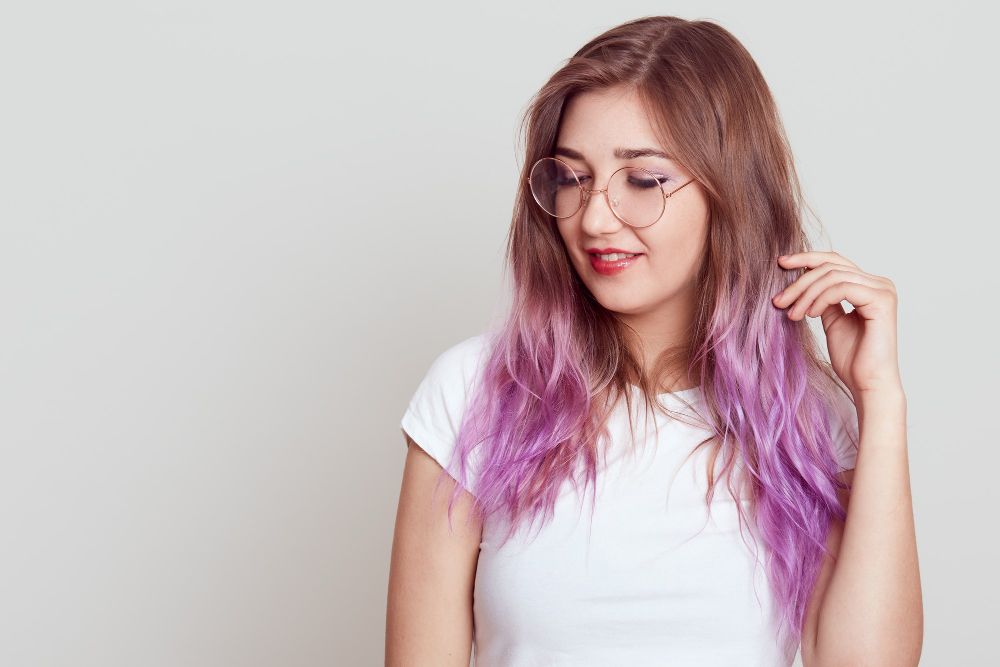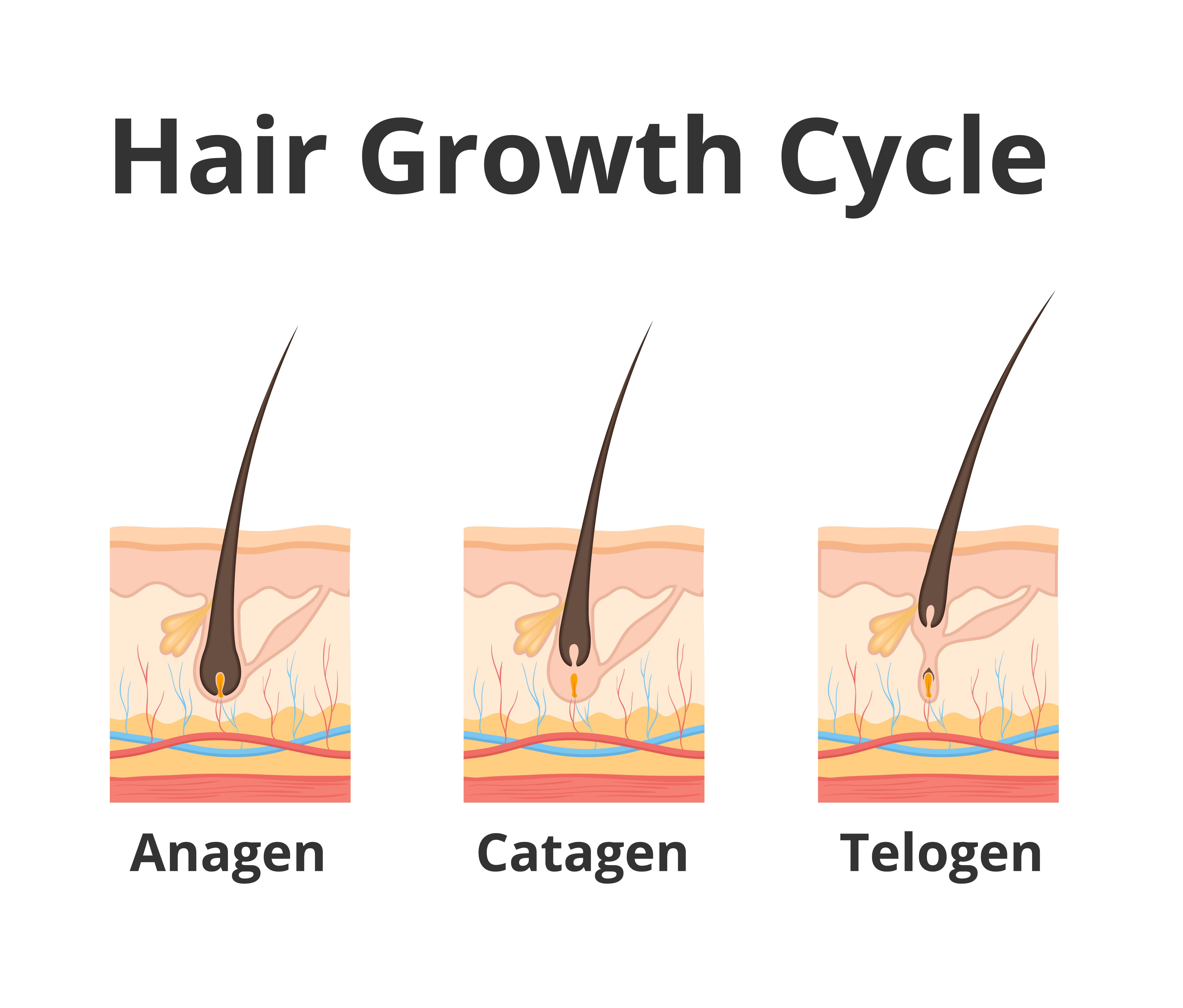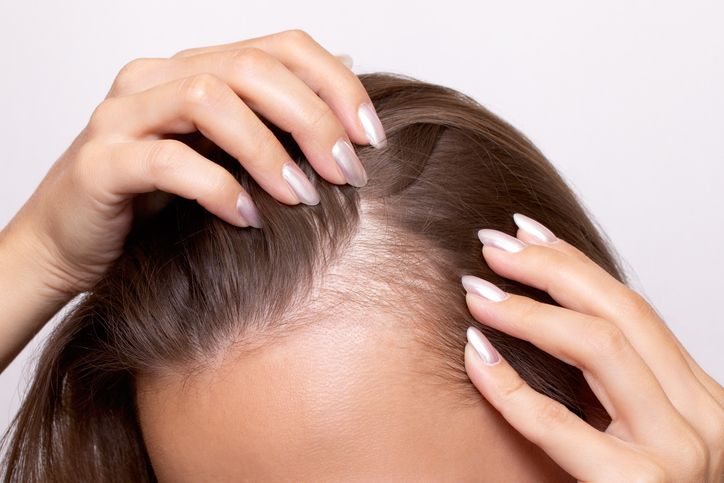- Home
- Trend
- Weight Loss Strategies
- Acne Tips
- Hair Health Information
- Blemish Removal Tips
- Acne Scar Removal Tips
- Muscle Building Techniques
- Intimate Care Tips
- Postpartum Intimate Care
- Eye Bags Wiki
- Tips for Face Slimming
- Secret of Permanent Hair Removal
- Breast Enlargement Tips
- Cure to Snoring
- Marionette Lines
- Skin-Tightening Secrets
Many people dream of achieving flawless, poreless skin. Skincare ads often promote products that claim to "erase" or "shrink" pores completely, leading to the widespread misconception that pores are a flaw that can be eliminated. However, pores are an essential part of the skin’s function, helping regulate oil production, maintain hydration, and expel toxins.
While it’s impossible to get rid of pores entirely, there are effective ways to minimize their appearance and keep them from becoming clogged or enlarged. This article explores why some people have large pores on cheeks, nose, or forehead, what affects pore size, and how to reduce their visibility through proper skincare, treatments, and professional options.
What Are Facial Pores?
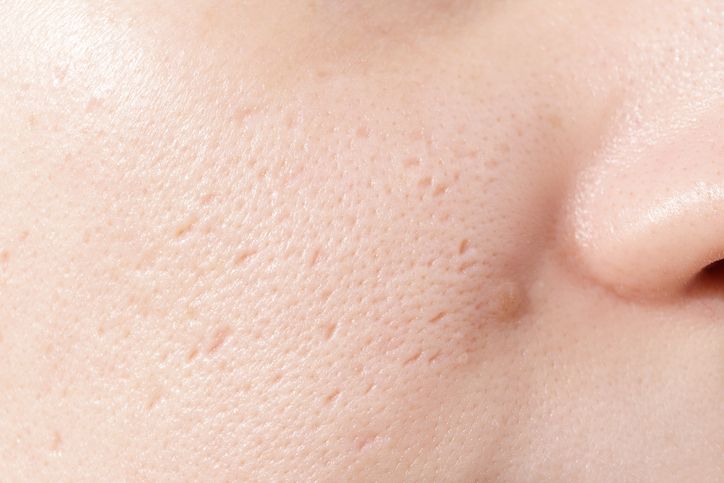
Pores are tiny openings on the skin’s surface that play an essential role in skin health. They serve as passageways for sebum (oil) and sweat, helping to keep the skin hydrated and regulate body temperature. Without pores, the skin would struggle to maintain moisture balance and eliminate toxins, leading to various skin issues.
Two Types of Skin Pores
There are two main types of pores, each serving a distinct function:
Oil Pores (Sebaceous Pores) – These pores are connected to sebaceous glands, which produce sebum (the skin’s natural oil). Sebum keeps the skin moisturized and acts as a protective barrier.
Sweat Pores – Part of the eccrine and apocrine sweat glands, these pores release sweat to regulate body temperature. Unlike oil pores, sweat pores are typically too small to be visible and are not associated with acne or enlarged pores.
Why Do Your Pores Look Large?
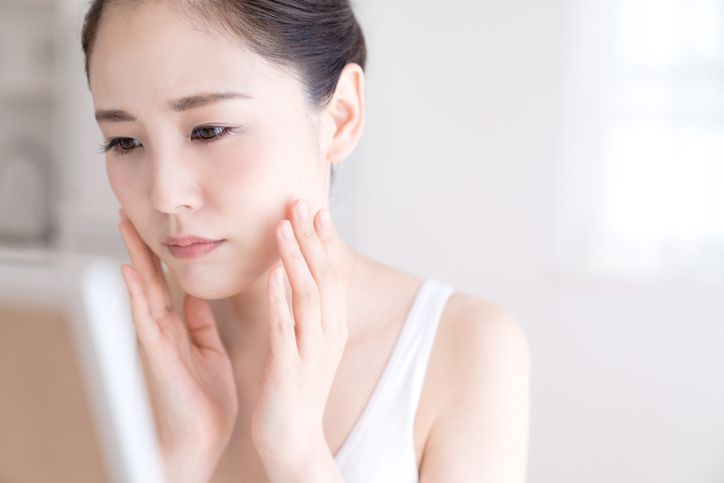
Some people naturally have more prominent pores than others due to a combination of genetics, skin type, and external factors. Here’s why open pores may appear larger or more noticeable:
Excess Oil Production
When the skin produces too much sebum, the pore openings stretch to accommodate the excess oil. This is most common in individuals with oily skin, particularly in the T-zone (forehead, nose, and chin) where sebaceous glands are more active.
A good skin care regimen that includes gentle cleansing and oil control can help regulate sebum levels and prevent large pores from worsening.
Increased Hair Follicle Volume
Pores are also connected to hair follicles, and larger follicles can make pores appear bigger. Thicker hair growth, especially around the nose and cheeks, is linked to increased hair follicle volume, contributing to more noticeable pores.
Clogged Pores
When dead skin cells, excess oil, and dirt accumulate inside pores, they become clogged. This stretches the pore walls, making them look larger. Regular exfoliation and deep-cleansing treatments can help unclog pores and keep them refined.
Loss of Skin Elasticity
As we age, the skin produces less collagen and elastin, which are responsible for keeping it firm and supple. A loss of skin elasticity can cause pores to appear wider as the surrounding skin begins to sag. UV exposure, poor skincare habits, and dehydration can accelerate this process.
Skin Dehydration and Poor Blood Flow
Contrary to popular belief, skin dryness can actually make your pores look more prominent. When the skin lacks moisture, it compensates by producing more oil, leading to clogged pores and inflammation.
Additionally, poor blood flow can reduce skin cell turnover, leading to dull, uneven skin texture and enlarged pores. Incorporating hydrating skincare products and boosting circulation through gentle massage can improve skin health and reduce the appearance of open pores.
Sun Damage and UV Exposure
Long-term exposure to the sun’s rays can weaken collagen fibers, leading to decreased elasticity and enlarged pores. Over time, sun damage can also cause the skin’s surface to thicken, trapping oil and dead skin cells inside pores.
Using a broad-spectrum sunscreen (SPF 30 or higher) and wearing protective clothing like a wide-brimmed hat can help prevent pores from stretching due to UV damage.
Inflammation and Skin Conditions
Certain skin conditions, such as rosacea, acne, and seborrheic dermatitis, can lead to chronic inflammation, which weakens the pore structure. When the skin is inflamed, the surrounding tissues swell, making pores look larger than they actually are.
To reduce inflammation, dermatologists recommend using non-comedogenic products, incorporating anti-inflammatory ingredients like niacinamide, and seeking professional treatments when needed.
免費體驗
Acne Treatment
1 Minute Self-Registration
Date should not be before minimal date
4 Biggest Mistakes People Make When Treating Large Pores
1. Over-Cleansing or Using Harsh Products
Many people believe that aggressively scrubbing their skin or using strong astringents will help shrink pores, but this approach often backfires. Harsh exfoliants, over-cleansing, and alcohol-based toners can strip the skin of its natural oils, leading to increased sebum production as the skin tries to compensate for lost moisture. This excess oil can make pores appear larger, rather than minimizing them.
A gentle cleanser with salicylic acid or glycolic acid is a better choice, as these ingredients help to dissolve excess oil, exfoliate dead skin cells, and keep pores clear without irritating or drying out the skin. Using lukewarm water instead of hot water when cleansing can also prevent further skin dryness and inflammation.
2. Not Wearing Sunscreen
Sun exposure is one of the leading causes of decreased elasticity in the skin, which makes pores look larger over time. UV rays break down collagen and elastin, two essential proteins responsible for keeping the skin firm and supple. As these structural components weaken, the skin loses its tightness, causing pores to appear stretched and more prominent.
Using a broad-spectrum sunscreen with SPF 30 or higher every day—even on cloudy days—helps prevent sun damage and maintain skin elasticity. Look for a non-comedogenic formula to ensure it doesn’t clog pores. Additionally, wearing a wide-brimmed hat and avoiding excessive sun exposure during peak hours can further protect the skin from UV-related damage.
3. Squeezing or Picking at Pores
It’s tempting to try open pores by extracting clogged pores manually, but this can do more harm than good. Squeezing, picking, or using non-sterile extraction tools can damage the skin’s surface, leading to inflammation, irritation, and scarring. In some cases, repeated trauma from picking at the skin can result in permanently enlarged pores, as the skin loses its ability to bounce back.
Instead of manually extracting your pores, consider using clay masks, which help absorb excess oil and draw out impurities from the pores. Chemical exfoliants, such as alpha-hydroxy acids (AHAs) and beta-hydroxy acids (BHAs), can also gently remove dead skin cells and help unclog pores without causing physical damage.
4. Skipping Moisturizer
Many people with oily skin mistakenly believe that skipping moisturizer will help control excess oil and prevent clogged pores. However, when the skin becomes too dry, it triggers the sebaceous glands to produce even more oil, leading to greasier skin and larger-looking pores.
Using a lightweight, non-comedogenic, oil-free moisturizer can help maintain proper hydration levels without clogging pores. Moisturizers containing hyaluronic acid or niacinamide are especially beneficial, as they provide hydration while also balancing oil production and improving skin texture.
How to Minimize Pores on Face?
While pores cannot be permanently removed, a good skincare routine can help minimize the appearance of pores and prevent them from becoming more noticeable. By incorporating the right treatments, you can keep oil production balanced, maintain skin hydration, and promote collagen production to keep the skin firm and smooth.
Use a Gentle Cleanser to Prevent Clogged Pores
Cleansing is the first step to managing large pores and keeping them from becoming clogged. A gentle cleanser removes dirt, oil, and debris without stripping the skin. Harsh cleansers can disrupt the skin’s natural moisture barrier, leading to excessive oil production and enlarged pores over time.
Look for a non-comedogenic cleanser with salicylic acid or glycolic acid, which helps dissolve dead skin cells and excess oil, keeping the pores clear and less visible. Washing your face twice a day with lukewarm water—rather than hot water—also prevents skin dryness and irritation.
Exfoliate 1–2 Times Per Week to Remove Dead Skin Cells
Regular exfoliation is essential for keeping pores clean and refining skin texture. Chemical exfoliants, such as glycolic acid (AHA) and salicylic acid (BHA), work by loosening dead skin cells and preventing clogged pores, which can contribute to their enlarged appearance.
For those with oily or acne-prone skin, salicylic acid penetrates deep into the pores, helping to unclog excess oil and debris. For dull or rough skin, glycolic acid boosts cell turnover, promoting collagen production and leaving the skin smoother and firmer. This also helps slow down the sagging skin effect that makes pores appear larger with age.
However, over-exfoliating can irritate the skin and increase oil production, so it’s best to limit exfoliation to 1–2 times per week.
Apply a Clay Mask Weekly to Absorb Excess Oil
Clay masks are highly effective for absorbing excess oil and drawing out impurities that can make pores more noticeable. Ingredients like kaolin clay and bentonite clay work by tightening the skin and reducing shine, making the appearance of pores less prominent.
Using a clay mask once a week helps prevent oil buildup in the T-zone, where pores tend to be the most visible. For even better results, look for masks infused with niacinamide, which helps improve skin elasticity and further reduces the look of big pores.
Moisturize with an Oil-Free Moisturizer to Maintain Hydration
Skipping moisturizer can lead to skin dryness, which causes the sebaceous glands to produce more oil to compensate. This excess oil can settle into pores, making them look even larger.
A lightweight, oil-free moisturizer keeps the skin hydrated without adding greasiness. Look for formulas with hyaluronic acid to retain moisture and niacinamide to regulate oil production and refine pore size. Keeping the skin plump and hydrated also helps counteract sagging skin, a common factor that contributes to the appearance of large pores as the skin ages.
Wear Sunscreen Daily to Protect Against UV Damage
Sun exposure is one of the biggest contributors to skin aging and enlarged pores. UV rays break down collagen and elastin, causing the skin to sag, which makes pores appear stretched. Over time, collagen loss reduces the skin’s ability to maintain its tight, supple structure, leading to bigger-looking pores.
To protect against sun damage, wear a broad-spectrum sunscreen with at least SPF 30 every day. A non-comedogenic, oil-free sunscreen will prevent clogged pores while shielding the skin from harmful UV rays. Additionally, wearing a wide-brimmed hat and seeking shade during peak sun hours can help further preserve skin elasticity.
Acne Treatment from Perfect Medical: Best Treatment for Enlarged Pores
If at-home treatments haven’t given you the results you want and you’re still struggling with large pores, acne, and excess oil production, it might be time to consider a professional solution. While skincare routines can help manage pore size, they often fall short in deeply cleansing clogged pores and addressing the root causes of enlarged pores. That’s where Perfect Medical’s Acne Treatment comes in.
Perfect Medical’s Acne Treatment: A Deep-Cleansing Solution
Unlike traditional treatments that only provide temporary relief, Perfect Medical’s Acne Treatment is designed to target multiple skin concerns at once. Using advanced vacuum dermabrasion technology, this treatment works by:
✔ Gently exfoliating clogged pores and eliminating dead skin cells that contribute to enlarged pores and breakouts.
✔ Regulating excess oil production to prevent pore stretching and excessive shine.
✔ Boosting skin hydration with a medical-grade hydrating essence, keeping the skin plump, balanced, and smooth.
✔ Reducing acne-related bumps and breakouts, refining the skin’s texture and tone.
Unlike harsh over-the-counter treatments, this non-invasive, painless procedure is suitable for all skin types, including sensitive and acne-prone skin. With no downtime, you can achieve visible improvements in both pore size and overall skin clarity after just a few sessions.
Achieve Poreless-Looking, Clearer Skin Today
If large pores and stubborn acne are affecting your confidence, don’t settle for ineffective treatments. Perfect Medical’s Acne Treatment offers a comprehensive, clinically-proven solution to help you achieve smoother, healthier skin. Book a consultation today and take the first step toward a refined, flawless complexion!
Perfect Medical's Acne Treatment免費體驗
Acne Treatment
1 Minute Self-Registration
Date should not be before minimal date
FAQ

1. What are the most effective treatment options for large facial pores?
To treat large facial pores, it's important to choose the appropriate treatment that targets both excessive sebum production and clogged pores. Options such as salicylic acid, glycolic acid, or oil-free moisturizers can help regulate oil production and maintain skin supple. For more visible results, professional treatments like vacuum dermabrasion or laser therapies are effective in reducing large facial pores and achieving smaller looking pores over time.
2. How can I keep my skin healthy while treating large facial pores?
Keeping your skin healthy while treating large facial pores involves using gentle treatments that do not irritate the skin. Avoid over-the-counter products that may be too harsh, as they can make your skin dry and lead to overproduction of oil. A good skincare regimen with products that apply evenly and regulate oil, such as oil-free moisturizers and gentle exfoliators, can help maintain a balanced complexion.
3. Can I treat large pores at home, or do I need to visit a skin specialist?
While there are many over-the-counter products that can help manage visible pores, treat large facial pores effectively may require professional care. A skin specialist can offer advanced treatments like chemical peels or laser therapies, which provide deeper pore cleansing and promote smaller looking pores. For maintenance, regular use of exfoliants and oil removal products can help.
4. Why do some treatments for large pores leave residue on the skin?
Some treatments may leave residue if not formulated to absorb quickly into the skin. It’s essential to choose products that are non-comedogenic and formulated for your skin type. Overuse of certain ingredients, especially those that target excessive sebum, may also cause products to leave residue, which can clog pores and counteract the treatment. Appropriate treatment with proper application can prevent this.
5. What should I do if I can’t get rid of my large pores despite using treatment options?
If you have tried over-the-counter products and at-home remedies without success, visiting a dermatologist's office is the next step. A skin specialist can assess your skin and recommend advanced treatment options, such as laser therapies or vacuum dermabrasion, which can effectively reduce visible pores and help regulate excessive sebum production. These professional treatments offer more long-lasting results than most over-the-counter solutions.






